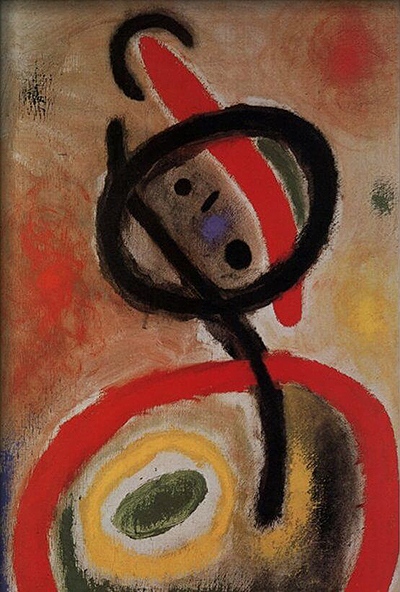Miro had completed his push towards abstraction many decades earlier than this painting was completed, but by 1965 the artist shows us his desire for long, sweeping brushstrokes.
The woman with this portrait is reduced to a series of lines and circles, and perhaps we would not be certain about what we were looking at were it not for the title supplied to us. The red and black circles deliver body and head, respectively, just as a young child might do in an early artwork of their own. This was the common criticism levelled at abstract artists in their early days but over time a greater understanding of movements such as these would thankfully prevail. Dali's paintings, for example, were more easily accepted because they demonstrated obvious technical skill within the surrealist world, but Miro's would require a greater level of understanding around what he was trying to achieve, as well as the journey that he had been on since the early days of his career. Aside from the main circles, there are also several dots in a variety of colours look almost celestial, as if small stars hanging in the distance behind larger planets.
Whilst the figure bears very little resemblance to any human being, we can still immediately understand its intention because of our familiarity with children's art as well as prehistoric art, where similarities can be drawn. These are the simplest forms of the human body but have been seen many times before and so we can spot the figure without delay. What perhaps makes Femme III interesting is that it also draws us close to Miro's use of cosmology, so we could also be looking at a night scene too, such as with his more detailed constellations series. If you browse the artist's paintings, you will see the repetition of animals, humans and birds throughout much of his career. The display of circles within this artwork may even remind some of another famous piece of modern art, namely Color Study: Squares with Concentric Circles by Kandinsky.




